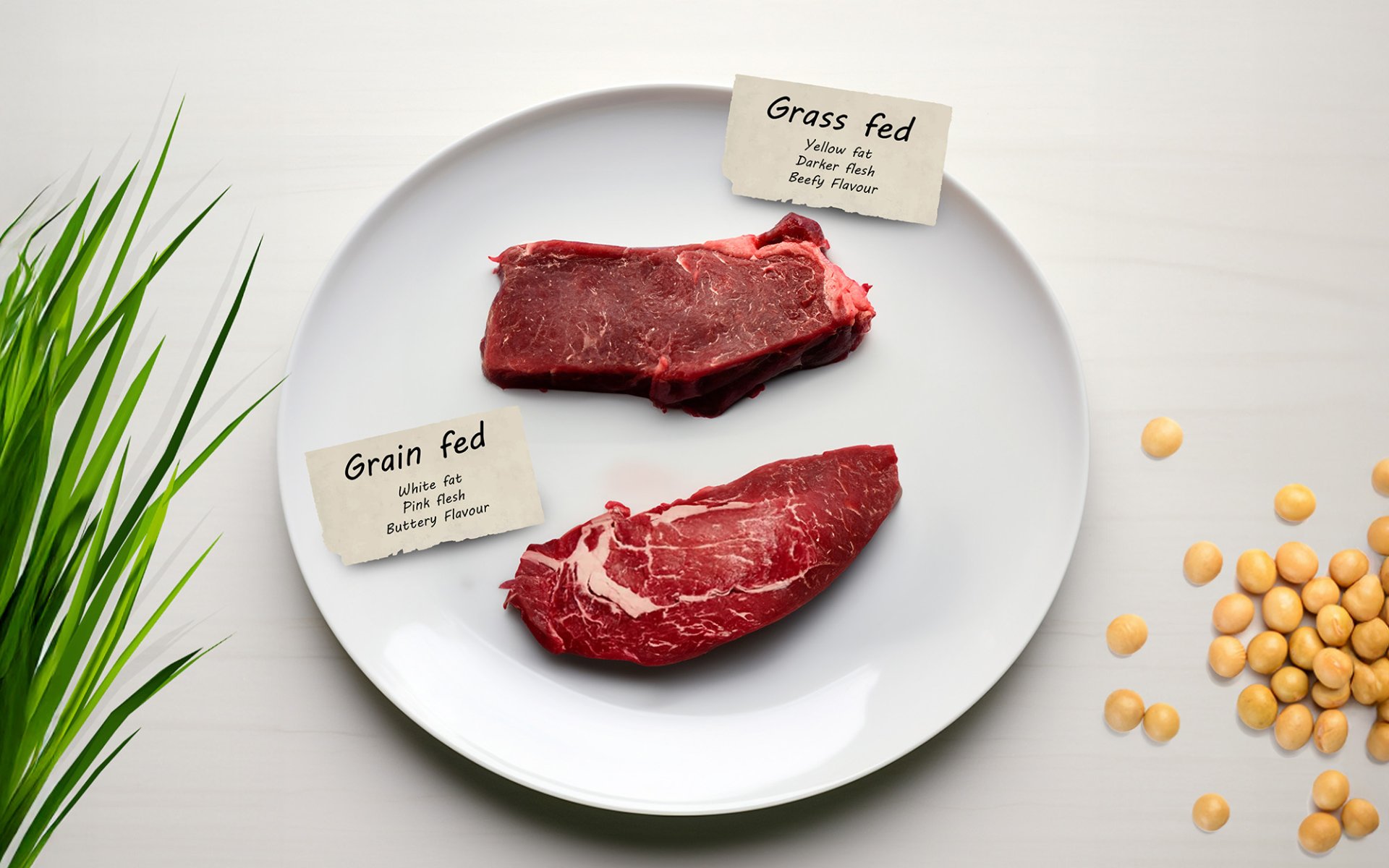Grain-fed and Grass-fed Beef
Last updated: 13 Jun 2025

Beef is one of the most widely consumed meats globally, serving as a vital source of protein and various essential nutrients. However, recent increasing public awareness about health and beef quality has sparked a debate regarding grass-fed versus grain-fed beef in terms of animal welfare, nutritional value, and taste. Today, Rimping Supermarket will help you understand these two types of beef.
Rearing Methods: Key to the Differences
Grass-fed and grain-fed beef differ in several aspects, starting with their rearing methods.
- Grass-fed Beef: Cattle are raised naturally in spacious pastures. They can roam and forage for food freely, which promotes relaxation and reduces stress, leading to better overall health for the animals.
- Grain-fed Beef: Cattle are raised in smaller pens with limited freedom, preventing them from exercising through walking. This results in more fat accumulation within their muscle fibers compared to grass-fed cattle. Furthermore, grain-fed cattle are often raised under Concentrated Animal Feeding Operations (CAFOs) as defined by the U.S. Department of Agriculture, where they are fed grains such as grass, corn, and soy.
Nutritional Composition: Which is Healthier?
Grass-fed Beef:
- Has a lower fat content.
- Contains higher levels of Omega-3 fatty acids and Conjugated Linoleic Acid (CLA). These beneficial fats contribute to various health advantages, including reducing the risk of heart disease and improving brain function.
- Is richer in vitamins and minerals, such as Vitamins A and E, and antioxidants like glutathione.
Grain-fed Beef:
- Has significant marbling due to less physical activity.
- Contains more saturated fat, which can have health implications.
- Has lower levels of beneficial nutrients compared to grass-fed beef.
- Taste and Texture: A Matter of Personal Preference
Grain-fed Beef:
- Is renowned for its marbling.The meat is tender, melts in the mouth, and has a good flavor, thanks to its higher fat content.
- Ideal for grilling as steaks or barbecuing.
Grass-fed Beef:
- Has a slightly chewier texture, offering a satisfying bite.
- Boasts a rich, beefy flavor.
- Suitable for stews or dishes that require longer cooking times.
Conclusion and Identification Tips
In summary, both types of beef have distinct advantages and disadvantages, depending on personal preference and intended cooking methods.
How to identify the two types of beef:
- Grass-fed Beef: The meat has a deep red color, the fat is creamy yellowish, and there is less intramuscular fat.
- Grain-fed Beef: The meat is bright red, has significant marbling, and the fat is white. The white color of the fat is a direct result of the cattle's diet and rearing.
Tags :
Related Content
Get to Know Green Bean Casserole, a Simple Dish That Has Become a Symbol of the Thanksgiving Holiday
Understanding Sugar Cookies A Beloved Sweet Treat Enjoyed Across the World, from the United States and Europe to Asia


